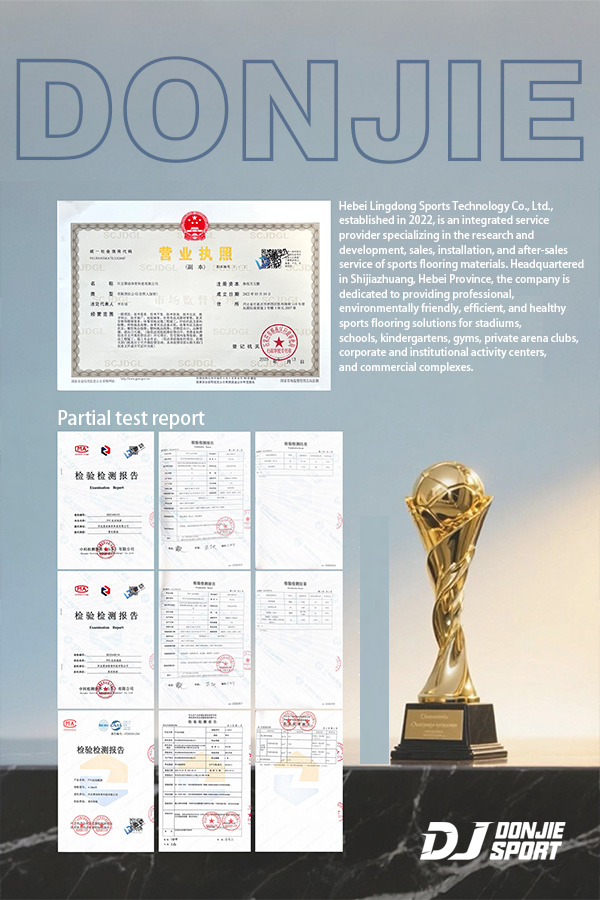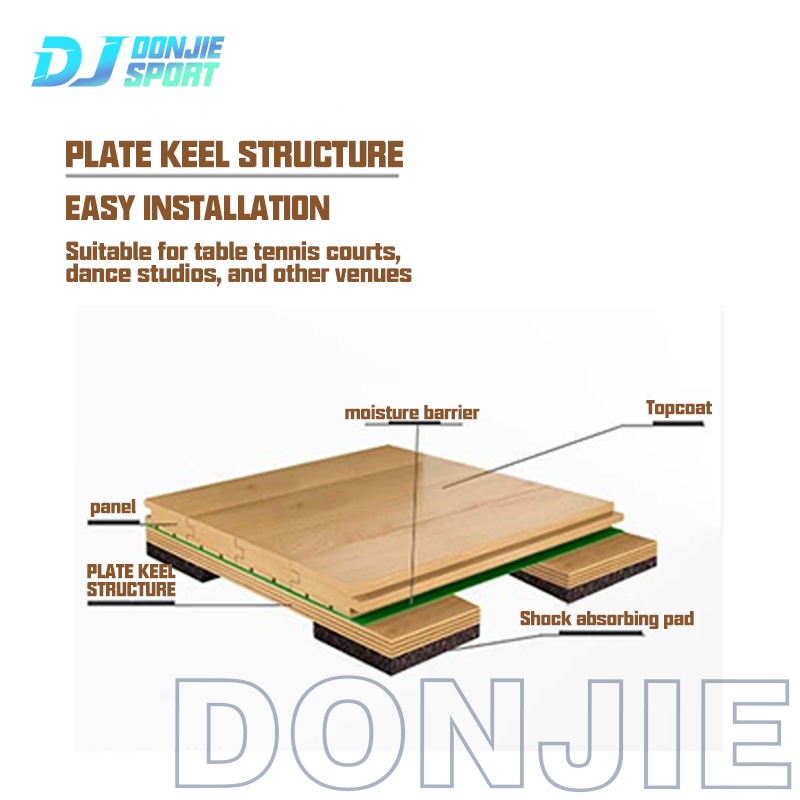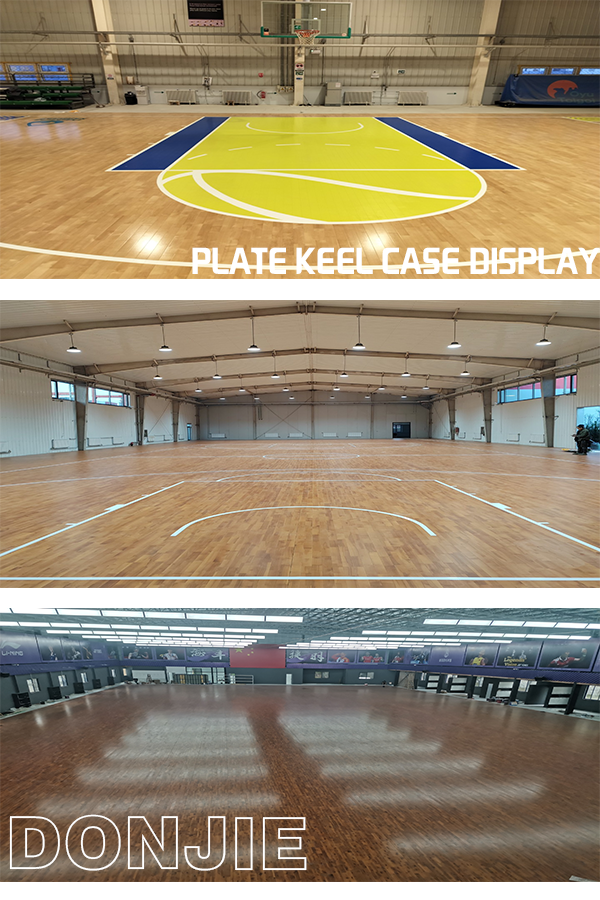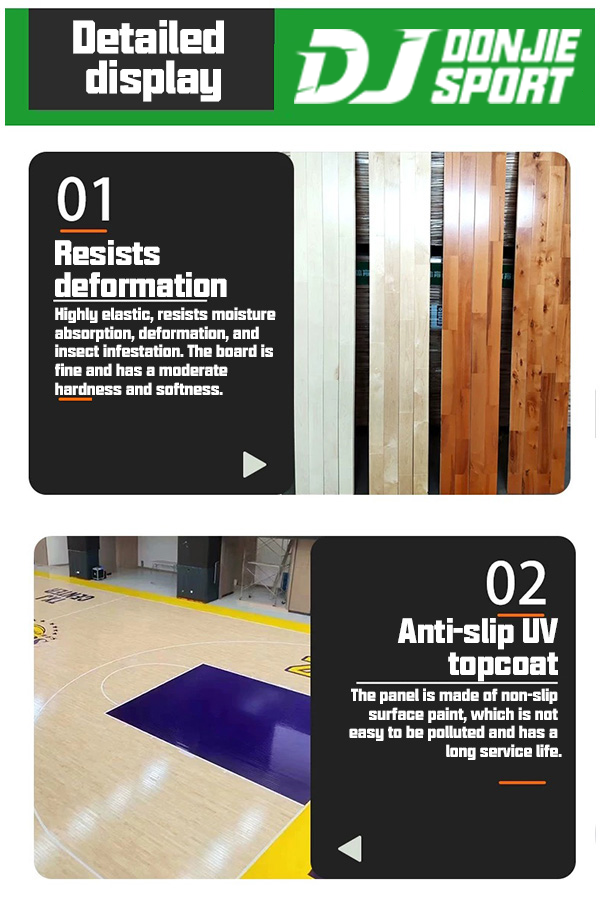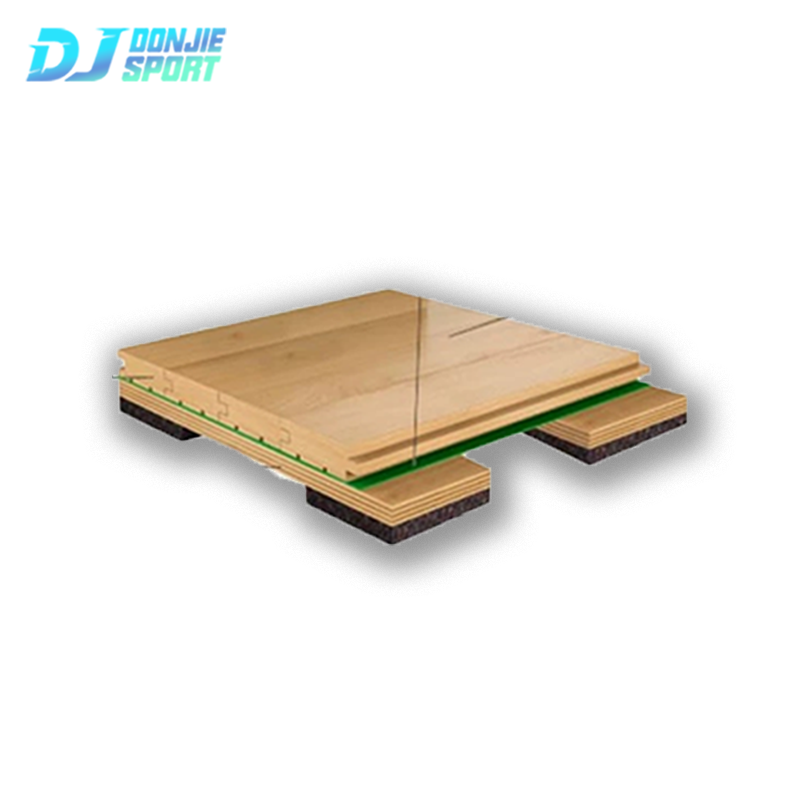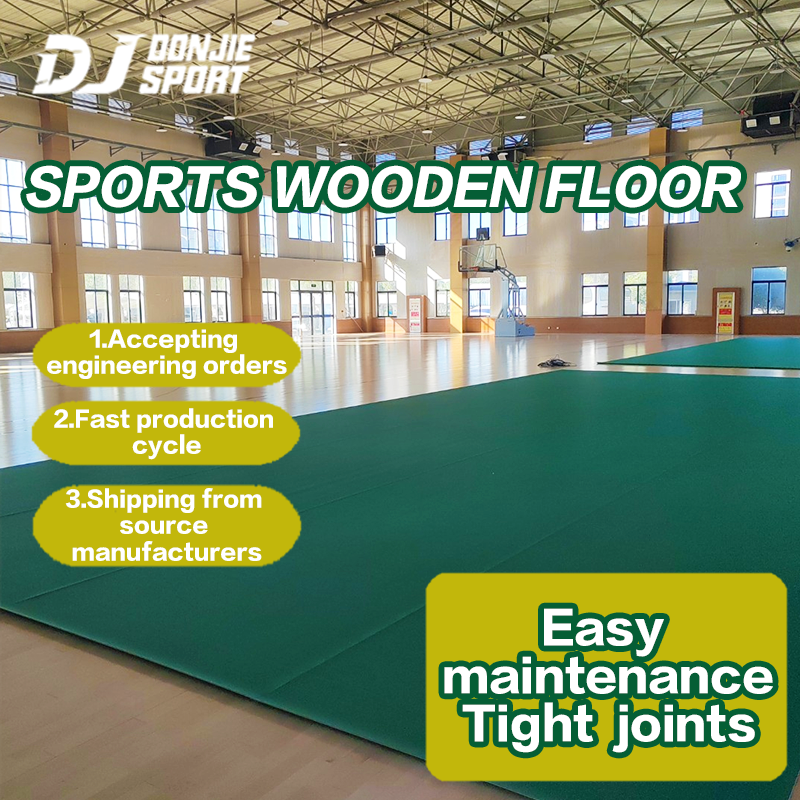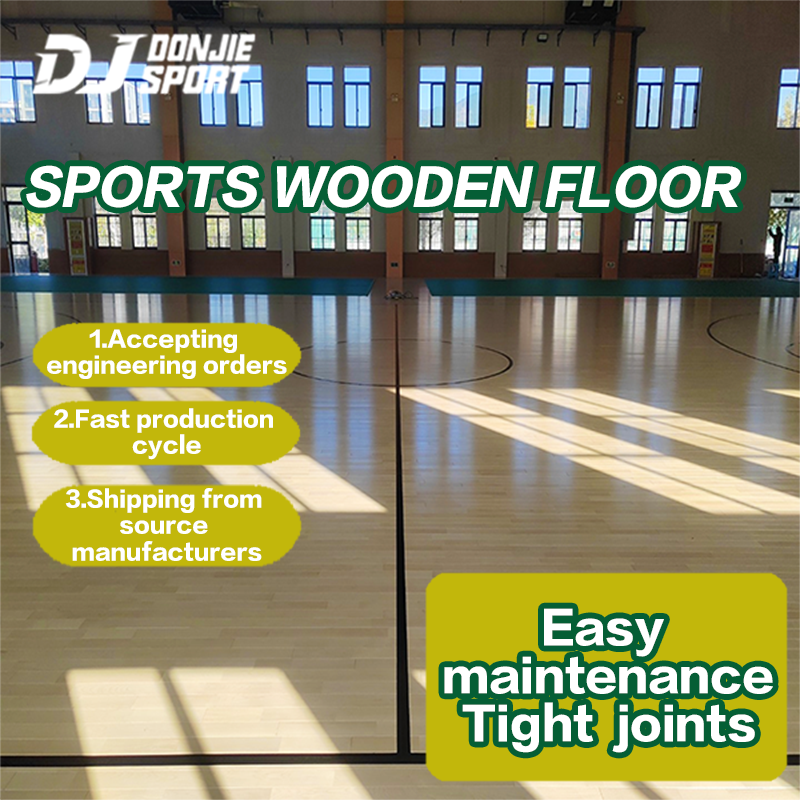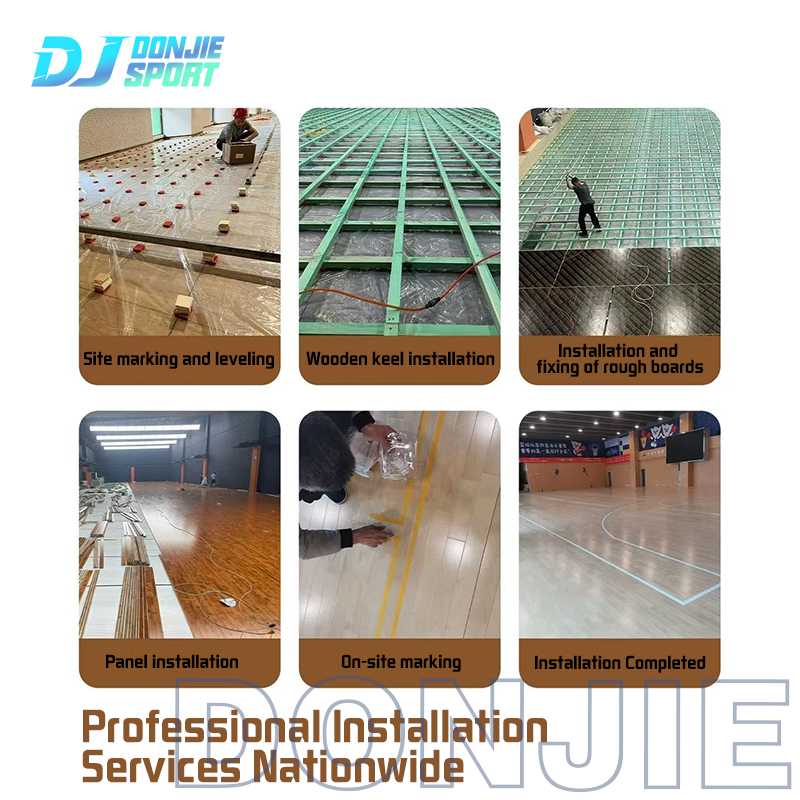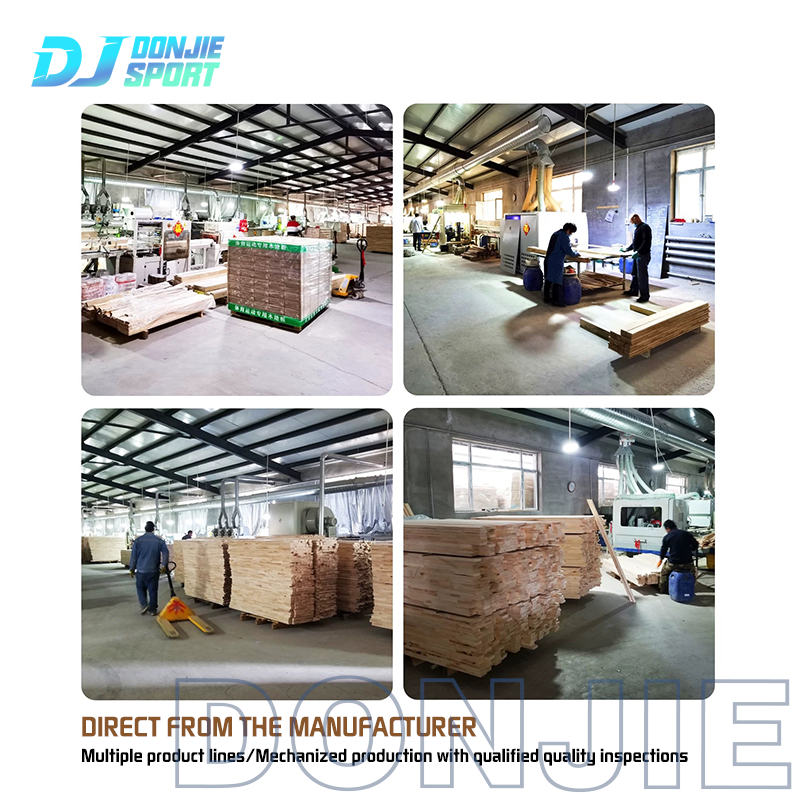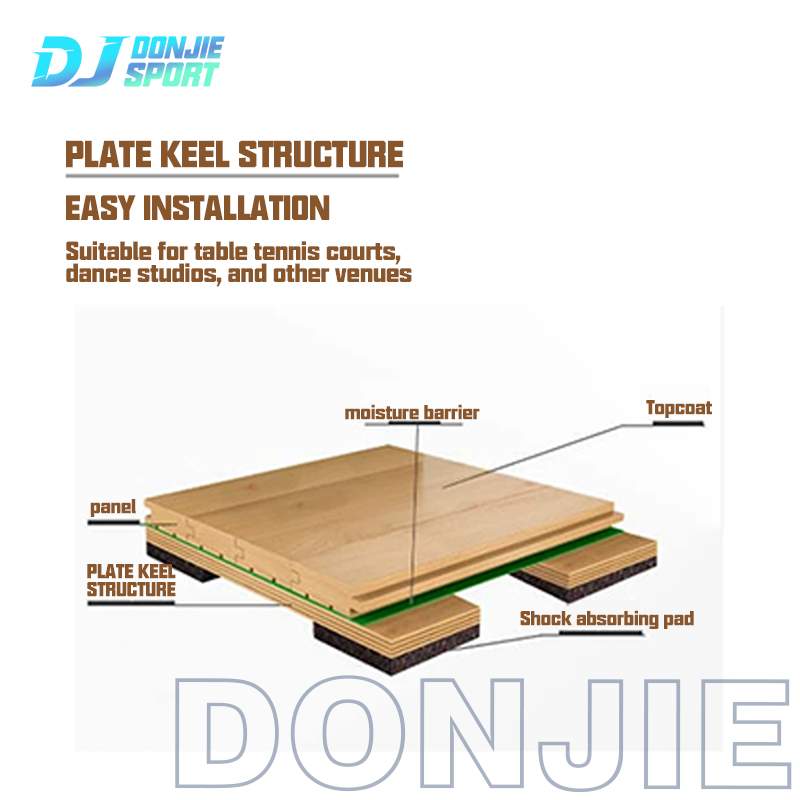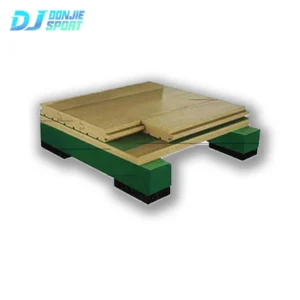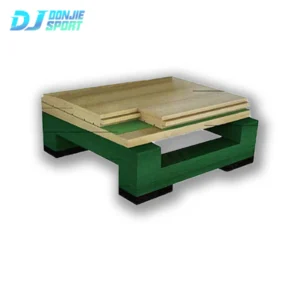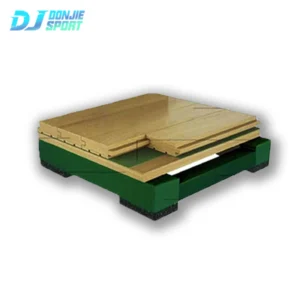Application Scenarios (Use Scenarios)
- Professional Basketball Venues
- School and University Gymnasiums
- Recreational Sports Centers
- High – End Residential Basketball Courts
Manufacturing Process of Indoor Basketball Hardwood Sports Flooring
- Selection of High – Quality Hardwood Logs
- Log Processing and Sawing
- Drying Process
- Milling and Shaping
- Sanding and Finishing
- Quality Inspection and Testing
Material Introduction of Indoor Basketball Hardwood Sports Flooring
Hardwood Species
Maple
Maple is the most commonly used hardwood species for Indoor Basketball Hardwood Sports Flooring, and for good reason. It has a tight grain structure that gives it excellent strength and durability, allowing it to withstand the heavy foot traffic and intense physical activity of basketball games. Maple also has superior shock – absorption properties, which help reduce the impact on players’ knees, ankles, and feet. Additionally, maple has a light, uniform color that provides a bright and clean appearance to the basketball court, enhancing visibility for both players and spectators. The wood is also easy to sand and finish, ensuring a smooth and consistent surface.
Oak
Oak is another popular choice for Indoor Basketball Sports Flooring. It is known for its durability and resistance to wear and tear, making it suitable for high – traffic areas. Oak has a distinctive grain pattern that adds a unique aesthetic appeal to the basketball court. It also has good shock – absorption properties, although not as good as maple. Oak is available in two main varieties: red oak and white oak. Red oak has a pinkish – red hue, while white oak has a more yellowish – brown color. Both varieties are suitable for basketball flooring, and the choice between them often depends on the customer’s aesthetic preferences.
Ash
Ash is a hardwood species that offers a good balance of strength, durability, and flexibility. It has a straight grain structure that gives it a smooth and uniform appearance. Ash has good shock – absorption properties, making it a comfortable surface for basketball players. It is also resistant to bending and warping, ensuring the stability of the flooring over time. Ash has a light to medium brown color, which can be stained to match different design styles. However, ash is not as commonly used as maple or oak for basketball flooring, mainly due to its higher cost and limited availability.

